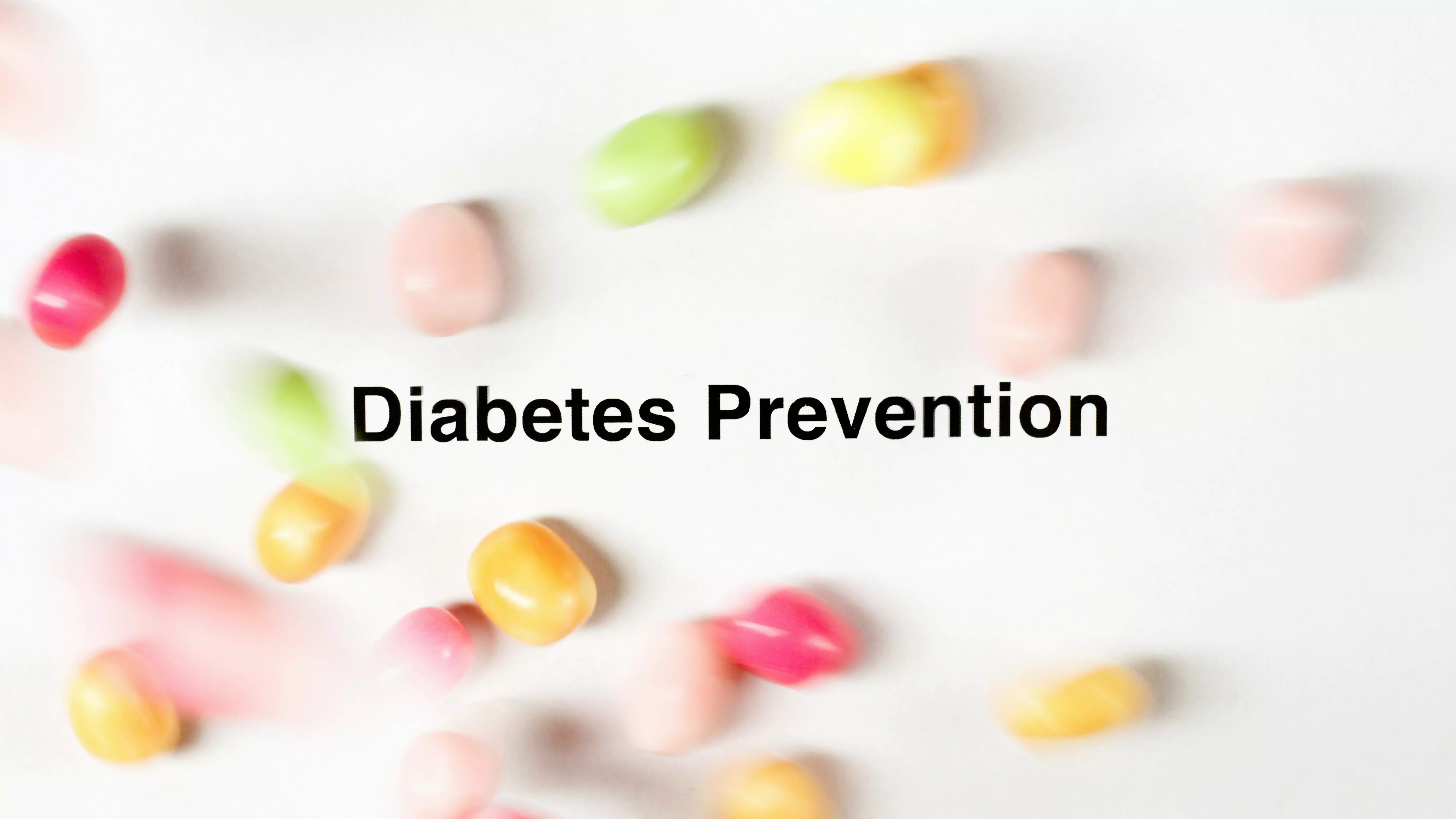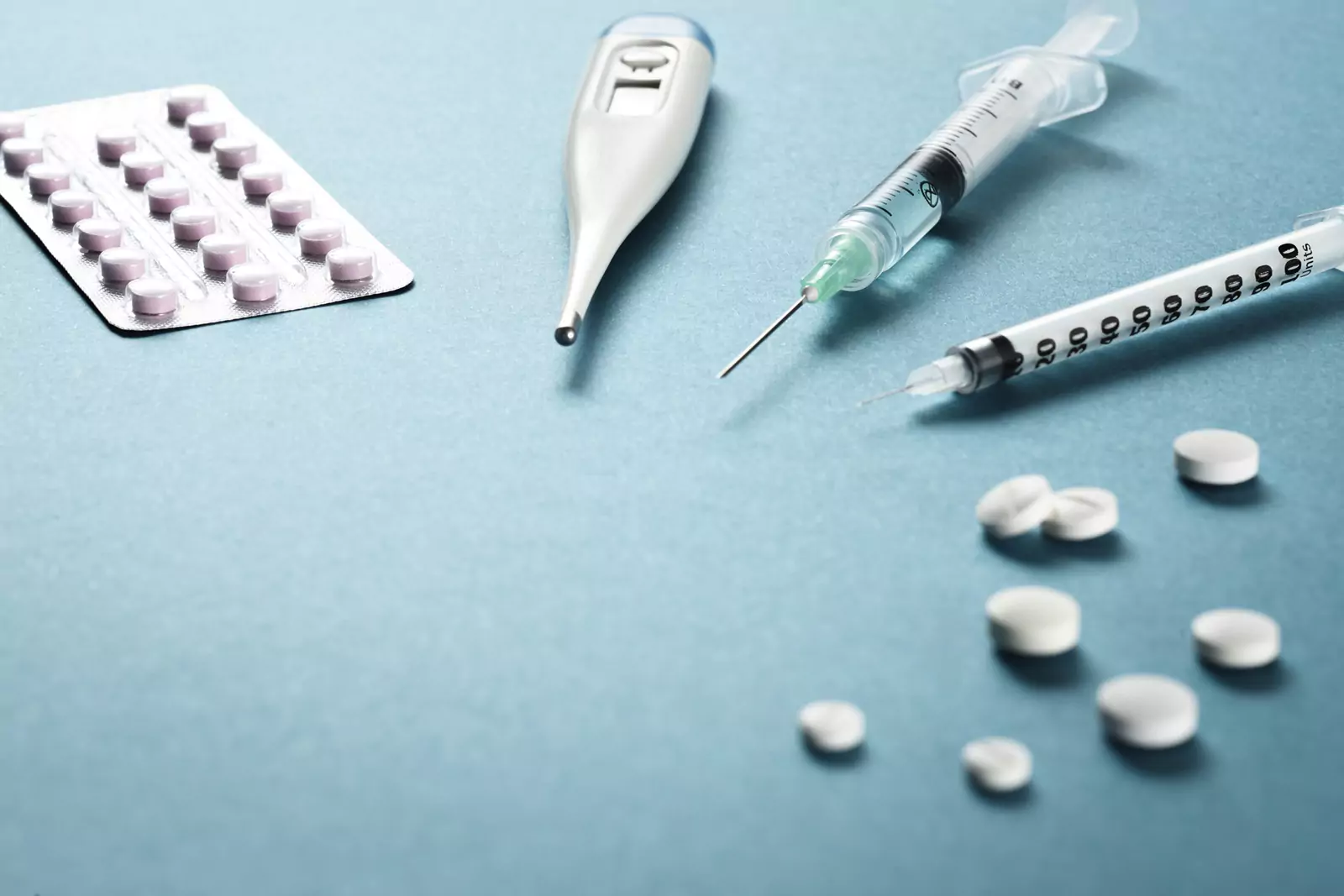





Prediabetes Diet - 9 Ways to Stay on Track


Table of Contents
- Definition of Prediabetes
- How Does Your Diet Impact Prediabetes?
- Understand the Glycemic Index
- Eat Fiber
- How Much Fiber Should You Eat?
- Watch Carbs
- Healthy Carbs
- Bad Carbs
- Consider Portion Sizes
- What is Your Ideal Portion Size?
- Eat Lean Protein
- Best Lean Meal
- Enjoy Small Amounts of Alcohol
- Drink Lots of Water
- Exercise Regularly
- Eat Plenty of Fruits and Vegetables
- Get Enough Sleep
- Conclusion
- About The Author
Do you have prediabetes, or know someone who does? It's incredibly important to have an appropriate diet to manage the condition. Thankfully, having a prediabetes diet doesn't mean sacrificing delicious food. It just means learning which types of food are best to eat and why.
In this article, I will cover 9 tips for staying on track with a prediabetes diet, from understanding the glycemic index to eating plenty of fresh fruits and vegetables. With the right approach to eating, you can manage your blood glucose and live a healthy lifestyle. So let's get started!
Definition of Prediabetes
Prediabetes is a condition that is a precursor to diabetes. It is characterized by a higher-than-normal blood sugar level that doesn't yet meet the criteria for full-blown diabetes. Prediabetes does not necessarily mean you will develop diabetes, but it does increase your risk of doing so.
The good news is prediabetes can be reversed with lifestyle changes such as the adoption of a prediabetes diet. A prediabetes diet should focus on nutritious foods with a low glycemic index and whole grains.
It should also include an adequate amount of water and regular physical activity. Following a prediabetes diet as part of a healthy lifestyle can help to reverse prediabetes and improve your overall health. To learn more about prediabetes, watch this video:
How Does Your Diet Impact Prediabetes?
A healthy prediabetes diet is essential in helping to manage prediabetes and reduce the risk of developing Type 2 diabetes. Eating the right foods in the right amounts can help lower blood sugar levels and manage weight, both of which are important in managing prediabetes.
When it comes to prediabetes, the main components to pay attention to in your diet are carbohydrates, protein, and fat. Focusing on foods containing complex carbs, such as whole grains, can help slow down digestion and promote a slower rise in blood sugar levels.
This helps to keep levels within a healthy range. Protein is important for maintaining a healthy weight and helping to reduce cravings for unhealthy foods. Eating lean proteins such as fish, poultry, and low-fat dairy can help promote a feeling of fullness and help manage weight.
Fat is also important when it comes to a prediabetes diet. Healthy fats such as olive oil and nuts can help to keep blood sugar levels in check as well as reduce the risk of heart disease and stroke. In addition to following a diet that focuses on these components, it is also important to limit portion sizes, avoid sugary drinks, and make sure to include plenty of fruits and vegetables.
Eating the right foods in the right amounts will help to keep blood sugar levels in check and can help to reduce the risk of developing Type 2 diabetes.
Understand the Glycemic Index
A proper prediabetes diet can be a powerful tool to reverse or at least manage the effects of this condition. Before you embark on any diet, it is important to understand the glycemic index and how it will affect your food choices. The Glycemic Index (GI) is a system that ranks carbohydrates according to their effect on blood glucose levels.
The rankings are based on a scale of 0 to 100, with 100 being the highest. Foods with a higher GI will cause a quick rise in blood glucose, while lower GI foods will result in a slower and steadier release of glucose. Foods with a GI of 70 or higher are considered high glycemic, while those with a GI of 56 or lower are considered low glycemic.
High Glycemic Index (GI) foods include white bread, potatoes, white rice, and processed snacks. All of these foods are quickly digested, resulting in a rapid increase in blood glucose. Low Glycemic Index (GI) foods include legumes, whole grains, fruits, and vegetables. These foods are slowly digested and require more energy to process, resulting in a more gradual increase in blood glucose.
By understanding the Glycemic Index and how it can affect your food choices, you can create a prediabetes diet that is both balanced and enjoyable. With the proper guidance and education, you can make positive changes to your diet that will help you manage your prediabetes.
Eat Fiber
Eating a diet rich in fiber is one of the best ways to help manage blood sugar levels and maintain a healthy weight. Fiber slows the digestion process, helping the body to absorb the nutrients it needs more gradually. This prevents the body from experiencing spikes or drops in blood sugar that can occur after eating meals high in carbohydrates. Additionally, fiber is satiating and can help you to feel fuller for longer, so you can more easily resist cravings in between meals.
How Much Fiber Should You Eat?
Including fiber in your diet is easy – aim for 25 to 30 grams per day. The Institute of Medicine recommends that women eat about 25 grams of fiber per day, while men should aim for about 38 grams. It is important to note that these are general recommendations, and individuals may need more or less depending on their health condition, age, or other dietary needs.
Good sources of fiber include whole grains such as brown rice, oats, and quinoa. Vegetables, fruits, and legumes are also great for fiber. Try to add one of these to each meal. Additionally, swapping unhealthy snacks for fiber-rich options, like popcorn, nuts, and seeds, can help to keep your diet on track. Eating a variety of fiber-rich foods is the best way to ensure that you’re receiving the full range of benefits.
Watch Carbs
A key part of following a prediabetes diet is limiting the number of carbohydrates you eat. Carbohydrates are found in food items like grains, vegetables, fruits, and milk. When we eat carbohydrates, our bodies break them down into simple sugars. While carbohydrates are an important part of a balanced diet, consuming too many can cause your blood sugar to spike.
For those with prediabetes, limiting the total amount of carbohydrates consumed each day is important. The amount of carbohydrates you need depends on your body size, activity level, and medications. Generally, it’s recommended to consume 45-60 grams of carbohydrates per meal and 10-15 grams of carbohydrates per snack.
To help limit the number of carbs you consume, start by measuring out your grains. A general rule of thumb is to aim for about 1/2 cup of cooked grain, such as oatmeal or brown rice, at each meal. Alternatively, you can look for lower carbohydrate options such as quinoa, buckwheat, or barley.
Healthy Carbs
If you have heard about healthy or bad carbs, you must have wondered, what makes a carbohydrate "healthy"? Generally speaking, the healthiest carbs are unrefined, complex carbohydrates that are low in simple sugars and high in fiber, vitamins, and minerals. These carbs include whole grains, legumes, fruits, and vegetables.
Bad Carbs
Now the next question will be then, what exactly constitutes a “bad” carb? Basically, bad carbs are those that are highly processed or contain added sugars or artificial sweeteners. Examples of bad carbs include white bread, white rice, packaged snack foods, sodas, and sweets. When you’re making dietary changes to help control your blood sugar levels, the best approach is to minimize the number of bad carbs you consume.
Consider Portion Sizes
When it comes to developing a prediabetes diet, it’s important to be conscious of portion sizes. Eating too much at one time can lead to a spike in your blood sugar, which can have damaging effects on your overall health. It’s important to aim for small, regular meals throughout the day to keep your blood sugar steady.
What is Your Ideal Portion Size?
The first step when planning your prediabetes diet is to know what one portion looks like. Generally, one portion size is equal to 1/2 cup of grains, 1/2 cup of cooked vegetables, and 2 tablespoons of nut butter or other proteins.
For protein, such as meats, poultry, and seafood, one portion should be about the size of a deck of cards or the palm of your hand. Fats, such as avocados and olives, should be about the size of a ping-pong ball.
You should also pay attention to the serving size when you read the nutrition label on food packages. This will tell you the amount of food a serving provides and how many servings are in the package. A single serving may not equal one portion, so you should make sure to read the label carefully.
Eat Lean Protein
When it comes to following a prediabetes diet, eating lean protein is an essential part of keeping blood sugar levels in check. Protein helps slow down the absorption of sugar into the bloodstream, which helps minimize spikes in blood sugar. Lean protein sources, such as fish, chicken, eggs, and tofu, should be included in your diet.
Best Lean Meal
The best lean mean is the one in which the portions are moderate, and the protein is cooked in a healthy way. For instance, lean proteins can be grilled, baked, or sautéed with healthy oils like olive or avocado oil instead of deep-frying them. Additionally, reducing the amount of red meat in your diet can help you regulate your blood sugar since red meat can be high in saturated fat.
Adding lean protein to your diet can also be beneficial in other ways. It can help control hunger and cravings, and it enhances weight loss. Eating lean proteins can also help promote muscle growth and strength, which can help improve physical health and reduce the risks associated with prediabetes.
Overall, eating lean protein is an important part of managing a prediabetes diet. It can help reduce blood sugar spikes, control hunger, and promote weight loss. Be sure to choose the right kinds of lean proteins and prepare them in a healthy manner to get the most out of them.
Enjoy Small Amounts of Alcohol
Enjoying small amounts of alcohol can be part of a healthy lifestyle for individuals with prediabetes, but it’s important to stay mindful of how much you’re drinking. A moderate amount of alcohol can reduce the risk of developing prediabetes, but drinking too much can increase the risk.
The US Dietary Guidelines suggest a maximum of two drinks a day for men and one drink a day for women. One drink is considered to be 12 ounces of beer, 5 ounces of wine, or 1.5 ounces of hard liquor. If you have prediabetes and choose to drink, be mindful of the amount and type of alcohol you’re consuming, as these can affect your blood sugar levels.
Additionally, be sure to eat a balanced meal, with a good mix of carbs and proteins, before or while you’re drinking to help mitigate potential spikes. Lastly, if you’re taking medication to help manage your prediabetes, talk to your doctor about how alcohol might interact with your treatment.
Drink Lots of Water
One of the most important nutritional components of a prediabetes diet is to drink lots of water. Water is the key to keeping yourself hydrated and is vital in regulating your body’s metabolism. When you drink enough water, it helps keep your metabolism running smoothly and efficiently, which can help you better manage your blood sugar levels.
Additionally, consuming adequate amounts of water can help reduce food cravings, as it can make you feel fuller, and faster. Be sure to monitor your water intake throughout the day. Try to aim for 8-10 glasses of 8 ounces of water or more a day. If you’re struggling to keep track, try writing down your water consumption each day or setting reminders on your phone. By drinking lots of water every day, you can ensure that you stay adequately hydrated and on track with your prediabetes diet.
Exercise Regularly
Studies show that a lack of exercise can increase the risk of insulin resistance. Exercise helps to avoid dangerous blood sugar spikes by enabling your body to use insulin more efficiently. Additionally, exercise can help you to maintain a healthy weight and reduce blood pressure, both of which can help to improve your overall health.
A good exercise routine for a prediabetes diet should include both cardio and strength-training exercises. Cardio exercises help to use more energy, which helps to keep your blood sugar levels steady. To get the most out of your prediabetes diet exercise routine, focus on both your diet and exercise. Make sure you are eating a balanced diet and avoiding any foods that can spike blood sugar.
Eat Plenty of Fruits and Vegetables
Eating plenty of fruits and vegetables is one of the most important components of following a prediabetes diet. Fruits and vegetables are rich in vitamins, minerals, and dietary fiber and are key components of any healthy diet. They are also low in calories, making them an ideal snack option between meals.
When choosing fruits and vegetables, it's best to opt for fresh, organic whenever possible. Frozen or canned fruits and vegetables are fine. But they may lack some of the vitamins and minerals that you would get from fresh fruits and vegetables. Be sure to incorporate a variety of fruits and vegetables into your diet. You'll surely enjoy the health benefits that come with it.
Get Enough Sleep
Getting enough quality sleep every night can have many positive effects on your health, including helping to manage prediabetes. Sleep enables the body to properly regulate its hormones, including those involved in metabolism and glucose levels. When you don’t get enough sleep, your body is unable to effectively control your blood glucose levels, leading to prediabetes.
Getting enough sleep should be a priority for adults with prediabetes. It can help you stick to your prediabetes diet, lower your risk of developing type 2 diabetes, and reduce stress. If you’re having trouble getting enough sleep, speak to your doctor, that can help you get a better night’s rest.
Conclusion
In conclusion, it is important to understand that diet plays a major role in managing prediabetes. One should make proper lifestyle adjustments to stay on track. Eating the right carbohydrates, getting enough fiber and lean protein, limiting portion sizes, and drinking plenty of water are great ways to maintain healthy blood sugar levels.
Additionally, try to get plenty of sleep, exercise, and eat plenty of fruits and vegetables. With the right diet, lifestyle modifications, and support, you can manage your prediabetes and live a happy and healthy life.
About The Author
Who is Dr. Ergin? Dr. Ahmet Ergin is an endocrinologist interested in and passionate about diabetes care. Dr. Ergin earned his medical degree with honors at Marmara University School of Medicine in Istanbul, Turkey. Then, he completed his internal medicine residency and endocrinology fellowship at Cleveland Clinic in Cleveland, Ohio.
He is a board-certified Internal Medicine and Endocrinology, diabetes, and metabolism physician. He is also a certified diabetes education specialist. Disclaimer: Any information on diseases and treatments on this website is for general guidance only. It must never be a substitute for the advice your doctor or other qualified healthcare professional provides. Always seek the advice of your physician or other qualified healthcare professional’s advice with questions regarding your medical condition.
Written By Dr. Ahmet Ergin
461 total articles
Meet Dr. Ahmet Ergin, a highly skilled and dedicated endocrinologist with a passion for diabetes care. Dr. Ergin earned his medical degree with honors from Marmara University in Istanbul. He completed internal medicine residency and endocrinology fellowship at Cleveland Clinic. Dr. Ergin is board-certified in Internal Medicine, Endocrinology, Diabetes, and Metabolism due to his vast medical expertise. He's a certified diabetes educator, author of “The Ultimate Diabetes Book,” and founder of “the SugarMD YouTube channel.” Dr. Ergin offers exceptional diabetes care to his patients in Port Saint Lucie, FL, helping them manage effectively. For a closer look into his insights and experiences, connect with Dr. Ahmet Ergin on LinkedIn, Instagram, and YouTube.”
Disclaimer: These statements have not been evaluated by the Food and Drug Administration. Information on this website isn't intended to treat, cure or prevent any disease. Discuss with your doctor and do not self-treat.
Products















